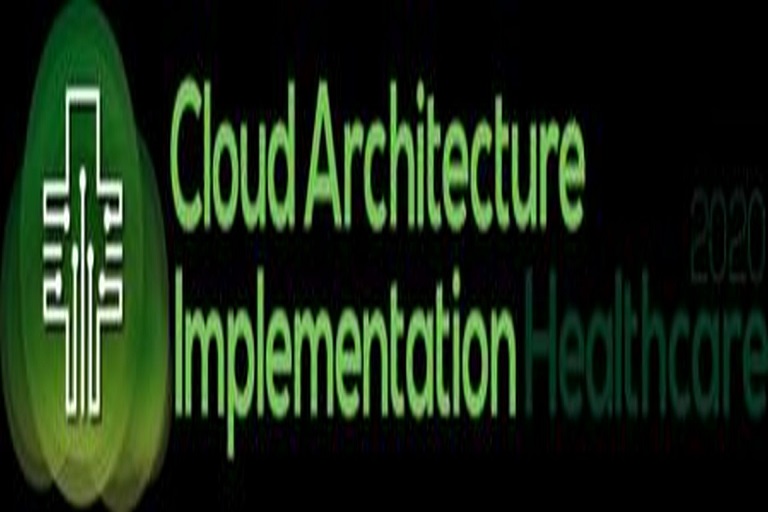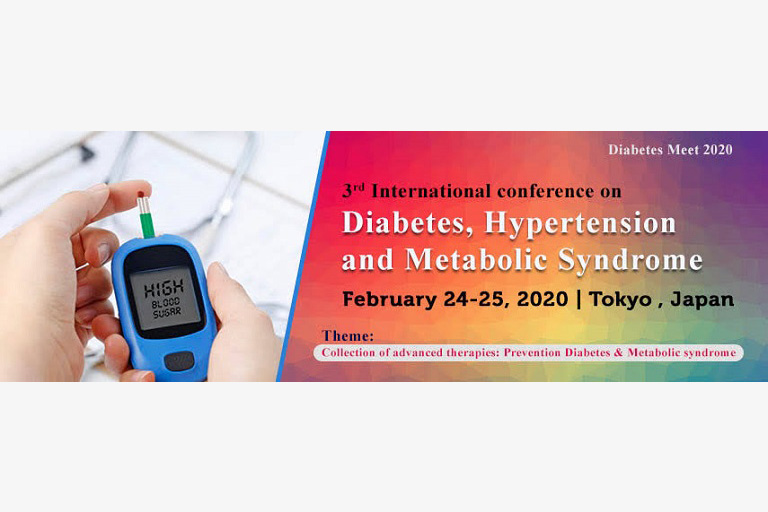Health Care Information Technology (HCIT) has a significant role to play in the future of health care. Although still relatively early in the market adoption and development cycle, there is now increasingly systemic implementation and consolidation of advanced, value-added information systems across and within all facets of the health care industry. This includes both private and public entities, from hospitals and physician practices to research institutions, third-party insurers, pharmacy service providers and more.
The general understanding of Health Care IT usually involves the digitization and electronic storage of patient records, aka “Electronic Health Records” (EHR), which is indeed a significant component. However, there is considerably more to the story. The IT function in health care is evolving to provide services that are customized to fit the specific needs of individual health care entities and are designed to integrate data and information from clinical, financial and operational activities into a unified, systemically compatible platform.
Additionally, one of the more exciting and revolutionary aspects of HCIT is the potential to leverage the increased use of both the Internet of Things (IoT) and advanced data analytics in the health care industry. These activities could have tremendous implications for patient care in terms of both positive outcomes and capital efficiency. (Author’s note: I hesitate to use terms like “capital efficiency” when discussing patient care and outcomes because we are talking about someone’s son or grandmother or wife and not just an “outcome”. However, since this is a financial article and my space is somewhat limited, please forgive the rather antiseptic tone regarding patient care.)
HCIT also has the potential to help providers seamlessly meet evolving electronic claims submission and processing rules. There are so many payors and so many different insurance plans, each of which has its own specific reporting requirements and formats, and an effective HCIT system can simplify this process by offering an integrated system that is updated centrally as health care plans and benefits change. This will help reduce costs (in both time and money) from billing or claims processing mistakes, which should lead to better integration of the clinical (i.e., patient treatment) process and revenue (i.e., billing) cycles. This centralization can also ensure that business and practice processes are in compliance with ever-changing state and federal regulations.
While the move to such digitization has far-reaching implications for improved efficiency and effectiveness in the provision of health care, it also presents challenges such as the protection and confidentiality of electronic data, as required under the Health Insurance Portability and Accountability Act (aka “HIPAA”) and other medical confidentiality statutes and rules. And as anyone who has ever gone through an IT “upgrade” at their place of employment knows, it’s never as easy or smooth as it sounds, and it invariably takes away (temporarily) from your ability to do your job. Health care is no different, and in fact, may present an even MORE challenging environment for managing a change in the IT function, since any disruption in workflow could have a detrimental impact on patient care. Physicians, nurses and other practitioners and caregivers often work long, hard hours as it is, and are often (and I’m speaking from direct experience here) creatures of habit who are more concerned with taking care of their patients than with enduring the slings and arrows that implementing new IT entails.
There is also the possibility that the increase in data availability and data analysis could lead to the revision of certain medical practice standards. While, in theory, this would be a potentially major benefit, in practice this will bring up issues related to the professional medical judgment of individual providers versus “What the big data says”, and leads to an ethical discussion that is beyond the scope of this article. These changes could impact issues such as legal liability standards and the conditions and treatments that insurers will pay for, which could in turn impact physician and caregiver practice patterns and habits. Again, this is a topic that’s beyond the scope of this article, but is worth noting.
Another potential hurdle for many health care providers is cost. Although there are a number of different business models – from purchasing a full-blown proprietary soup-to-nuts IT system with all the bells and whistles, to simply leasing a simple, cloud-based SaaS (Software as a Service) – not every health care entity has sufficient funds to implement these new IT products.
The American Recovery and Reinvestment Act of 2009 (ARRA) provides $35 billion in financial incentives to encourage the development and adoption of technological services and products within health care via the HITECH Act. (HITECH stands for: Health Information Technology for Economic and Clinical Health, and would also require another article to delve into in any detail). Under the HITECH Act, an individual health care professional, such as a physicians’ office, is eligible for a maximum of $44,000 over a four-year period, and an individual hospital is eligible for up to $4 million over the same time frame. In addition to the affirmative financial incentives health care organizations are eligible for under the ARRA, beginning this year (2016) health care organizations will be subject to PENALTIES for failure to adopt certain levels of health care IT.
HCIT is expected to be a $105 billion industry by 2020. According to Health Care Informatics, the six largest HCIT companies in 2015 by revenue are: Optum ($5.3 billion revenue); Cerner (NASDAQ:CERN) ($3.4 billion); McKesson (NYSE:MCK) ($3.1 billion); Dell ($2.9 billion); Cognizant (NASDAQ:CTSH) ($2.7 billion); and Phillips (NYSE:PHG) ($2.7 billion). Other major players include Siemens (OTCPK:SIEGY) ($1.9 billion), Epic Systems ($1.8 billion), and GE Healthcare (NYSE:GE) ($1.5 billion). In all, over 50 companies generated more than $200 million in HCIT revenue in 2015. Although there are a number of solid companies operating in the HCIT space, my favorite is Cerner Corp.
Cerner Corp.
With nearly 16,000 employees worldwide, a market capitalization of $19 billion and annual revenue in 2014 of $3.4 billion, Kansas City, Missouri-based Cerner Corp. is the largest dedicated standalone Health Care IT company in the world. It provides HCIT solutions, products and services at over 18,000 facilities worldwide. In February 2015, Cerner completed the acquisition of Siemens Health Services, a division of the German conglomerate Siemens SA., for approximately $1.3 billion. The acquisition increases Cerner’s overseas market presence by 50% and includes an ongoing R&D deal with parent company Siemens SA. Siemens Health Services has a significant presence in some of the larger, more stable economies in Europe, such as Germany, Austria, Sweden, and the Netherlands, giving Cerner a global market presence in 30 countries.
The client-facing portion of Cerner’s business consists of project consultants who work directly with provider/clients (at client facilities) to strategically determine the client’s HCIT needs and how best to address them, as well as to assist and coordinate system implementation. As mentioned previously, there is some potential downside due to workflow disruptions related to HCIT implementation. Part of the value of Cerner’s services is in minimizing these disruptions as much as possible through effective project management. Cerner employs a large number of engineers and technical staff that provide the actual IT services and products, and because of this large amount of in-house tech talent, the company can assist with development and implementation of customized solutions for clients as needed.
After implementation of the hardware or software into the client IT system, Cerner provides clients with ongoing services to maintain both the physical IT infrastructure and the software to run it, including client employee training, necessary software and hardware updates as required, troubleshooting and repairs, etc. This provides a recurring source of ongoing revenue for Cerner and develops deep client relationships. There are very high costs associated with switching systems (time, money and efficiency) once an organization has committed to an HCIT product.
Cerner’s Areas of Service
Hospitals & Health Systems/Physician Practice – Cerner provides comprehensive data management systems that link “front-office” clinical IT with “back-office” business IT. On the front end, care providers can access electronic patient records, work with integrated digital diagnostic tools and share results across different departments or practice groups, while on the back end, administrators can oversee functions such as inventory, personnel management and resource utilization rates in real time.
Revenue Management – From a business standpoint, this is one of the critical benefits of HCIT. By minimizing the amount of “paper” paperwork and by linking the service billing directly to the clinical services departments and then on to the various payors (i.e., patients, insurance companies and governmental entities), billing becomes much easier to track and less prone to mistakes, thus incrementally increasing a health care provider’s ability to allocate clinical resources more efficiently.
Continuum of Care – By standardizing medical records and providing a single patient record/history, the patient can be provided with a better continuum of care. Instead of every new provider who the patient sees having to request that a hard copy of the patient’s records be forwarded from every provider the patient has ever seen, the patient’s comprehensive records can be electronically shared in much less time, with much less duplicated effort and paperwork and much greater overall efficiency. The time that may be spent transporting and then trying to sift through a given patient record (which, again, I know from direct experience can be frustratingly extensive) can be significantly minimized, simply by standardizing an electronic record system across the industry and consolidating patient records into single electronic files. Electronic medical records can also minimize physical storage space and the staffing required to maintain and oversee physical medical records.
Analytics & Reporting – Outcome-based medicine has had a growing presence over the past few years, but the full-scale application of “data mining” and data analytics has yet to hit the medical industry to the same degree it has in other industries. As I mentioned earlier, this could have sweeping implications for practice patterns and habits by providing evidence as to which types of treatments and courses of action lead to the best outcomes in a given medical situation.
Medical Devices – This is where the Internet of Things and HCIT have a chance to intersect in some exciting new ways. Greater IT capabilities will allow for more real-time data collection and analysis. For example, instead of a patient having to wear a 24-hour holter monitor to measure the rhythm and cadence of their heart rate, which they then have to physically return to the practitioner in order for the data to be downloaded and analyzed, this data could be streamed back to the provider in real time, with a basic analysis provided as it is received, thus providing more real-time diagnostic benefit to the patient. There are innumerable ways in which medical devices can be improved via increased HCIT capabilities, and we are only beginning to scratch the surface of what can be possible.
Data Security – Hard copy records have many issues. They are relatively easy to destroy, there is a risk of information that is critical to the patient that is stored across multiple sets of records in multiple locations, etc. But they may be easier to secure than electronic records, since you can physically lock them away and have someone keep a direct watch over them. Electronic medical records will be subject to all of the intrusion and theft that electronic files are subject to. HIPAA requires, under legal penalty, that parties that are privy to patient health information must take steps to affirmatively maintain this confidentiality.
Additional areas of Cerner service offerings include, but are not limited to: IT for Research Organizations, Interoperability Across Multiple Platforms, Pharmacy IT, Health Plan Member Engagement, and Workplace Health.
Future HCIT Market Development
As the company’s solutions are more widely adopted across the health care industry’s larger players, Cerner will be able to offer similar services to smaller health care entities in more cost-effective ways. One way to think about this is that the larger players have the resources to pay for enough of Cerner’s services that the company’s costs of providing these services drop to the level where they are affordable for smaller entities.
Also, as larger entities adopt Cerner’s services and products, it will help standardize health care IT across a larger segment of the health care industry, thus making the adoption of a particular set of products and services less risky for smaller entities. Adoption by the overall market of a set of universally compatible standards is essential – otherwise, the result will simply be a mishmash of proprietary 1s and 0s. What these standards are and the way they develop will be critical, because broad, market-wide systemic compatibility is essential over the long run. The health care industry (and those it serves) will reap the most benefit from a standardized IT platform, or at least a universally standardized system of converting data from the IT system of one provider to another. Otherwise, the economic gains from efficiency and diagnostic gains from consolidated medical records and aggregated data will not manifest.
The logical market outcome over time is likely to be that the existing larger HCIT service providers like Cerner will begin to gain sufficient market share to absorb the smaller names. The company’s acquisition of Siemens Health Services in 2015 is one example, and I suspect there will be significantly more consolidation within this market over the next few years.
Basic Financials
From 2011 to 2014, Cerner’s revenue grew from $2.2 billion to $3.4 billion and operating margins improved from 20.8% to 24.7%. EPS grew strongly from $0.94 (2011) to $1.65 (2014), a compound growth rate of about 20.5%. 2015 EPS is expected to be $2.09 and a robust $2.46 in 2016 after the Siemens acquisition is fully integrated and accretive.
The company has very little debt, either long-term or short-term, and carries a debt-to-equity ratio of 0.1, with sufficient cash flow to make additional strategic acquisitions such as the Siemens deal. Additionally, Cerner had almost $14 billion backlog of business at the end of 2015, including $9 billion over 18 years for a contract with the U.S. Department of Defense to replace the DoD’s existing health IT system in its 55 hospitals and more than 350 clinics, as well as in ships, submarines and other deployed military assets.
The company has invested over $4.2 billion into research & development since 1979 and says it expects to invest a similar amount over the next six years.
Investment Fit
Cerner fits multiple aspects of a well-diversified portfolio: it is a Technology company that is fully exposed to Health Care in both the public and private sectors across the entire United States. In addition, the Siemens AG transaction means Cerner has exposure in additional, stable international markets as well, with additional room to grow over time. The company was likely close to fairly valued in late January/early February at around $60, but it still has significant growth potential from that level due to the enormous opportunity in HCIT. CERN has a high P/E of around 40, but the Health IT sector as a whole is close to a P/E of 50, so while it isn’t cheap, relative to peers it isn’t expensive either. The company does not pay a dividend, but that might make it a good fit for a fully taxable investment account if you are not keen on paying taxes on dividends. Cerner is not a “quick-strike” investment, but is one to buy and put away for at least 3-5 years. The 52-week price range for the stock is $52.91-75.72, and it enters the week of 2/16/2016 trading at $54.90.














































































